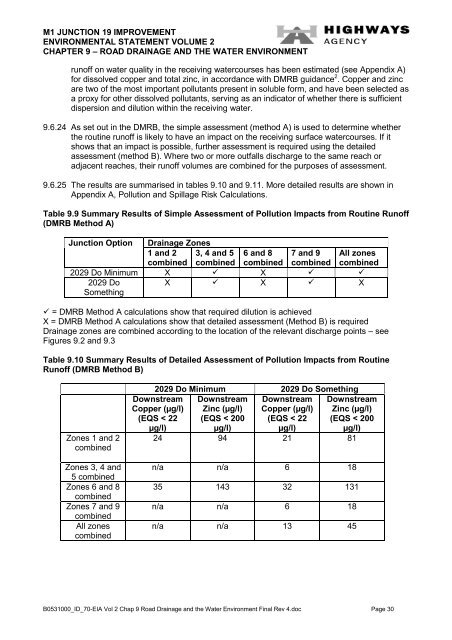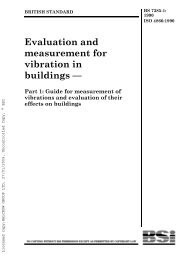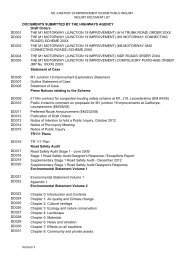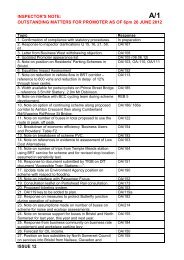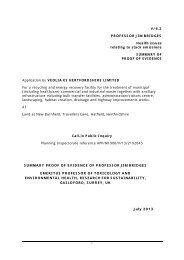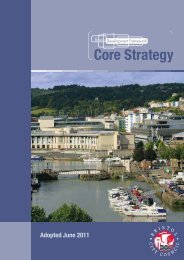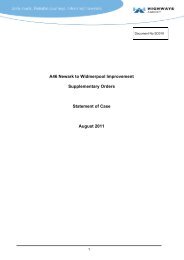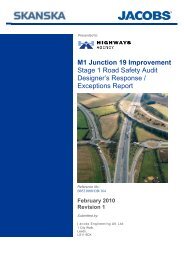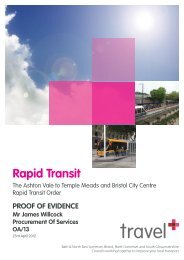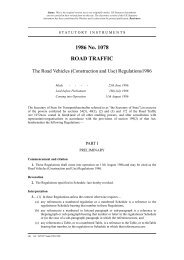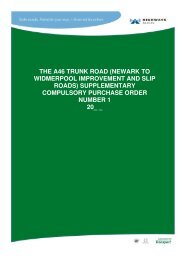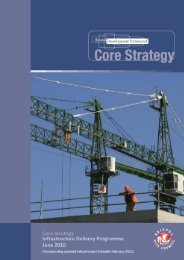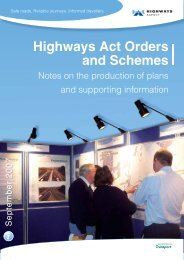Chapter 9: Road drainage and the water environment
Chapter 9: Road drainage and the water environment
Chapter 9: Road drainage and the water environment
You also want an ePaper? Increase the reach of your titles
YUMPU automatically turns print PDFs into web optimized ePapers that Google loves.
M1 JUNCTION 19 IMPROVEMENT<br />
ENVIRONMENTAL STATEMENT VOLUME 2<br />
CHAPTER 9 – ROAD DRAINAGE AND THE WATER ENVIRONMENT<br />
runoff on <strong>water</strong> quality in <strong>the</strong> receiving <strong>water</strong>courses has been estimated (see Appendix A)<br />
for dissolved copper <strong>and</strong> total zinc, in accordance with DMRB guidance 2 . Copper <strong>and</strong> zinc<br />
are two of <strong>the</strong> most important pollutants present in soluble form, <strong>and</strong> have been selected as<br />
a proxy for o<strong>the</strong>r dissolved pollutants, serving as an indicator of whe<strong>the</strong>r <strong>the</strong>re is sufficient<br />
dispersion <strong>and</strong> dilution within <strong>the</strong> receiving <strong>water</strong>.<br />
9.6.24 As set out in <strong>the</strong> DMRB, <strong>the</strong> simple assessment (method A) is used to determine whe<strong>the</strong>r<br />
<strong>the</strong> routine runoff is likely to have an impact on <strong>the</strong> receiving surface <strong>water</strong>courses. If it<br />
shows that an impact is possible, fur<strong>the</strong>r assessment is required using <strong>the</strong> detailed<br />
assessment (method B). Where two or more outfalls discharge to <strong>the</strong> same reach or<br />
adjacent reaches, <strong>the</strong>ir runoff volumes are combined for <strong>the</strong> purposes of assessment.<br />
9.6.25 The results are summarised in tables 9.10 <strong>and</strong> 9.11. More detailed results are shown in<br />
Appendix A, Pollution <strong>and</strong> Spillage Risk Calculations.<br />
Table 9.9 Summary Results of Simple Assessment of Pollution Impacts from Routine Runoff<br />
(DMRB Method A)<br />
Junction Option Drainage Zones<br />
1 <strong>and</strong> 2<br />
combined<br />
3, 4 <strong>and</strong> 5<br />
combined<br />
6 <strong>and</strong> 8<br />
combined<br />
7 <strong>and</strong> 9<br />
combined<br />
All zones<br />
combined<br />
2029 Do Minimum X X <br />
2029 Do<br />
Something<br />
X X X<br />
= DMRB Method A calculations show that required dilution is achieved<br />
X = DMRB Method A calculations show that detailed assessment (Method B) is required<br />
Drainage zones are combined according to <strong>the</strong> location of <strong>the</strong> relevant discharge points – see<br />
Figures 9.2 <strong>and</strong> 9.3<br />
Table 9.10 Summary Results of Detailed Assessment of Pollution Impacts from Routine<br />
Runoff (DMRB Method B)<br />
Zones 1 <strong>and</strong> 2<br />
combined<br />
Zones 3, 4 <strong>and</strong><br />
5 combined<br />
Zones 6 <strong>and</strong> 8<br />
combined<br />
Zones 7 <strong>and</strong> 9<br />
combined<br />
All zones<br />
combined<br />
2029 Do Minimum 2029 Do Something<br />
Downstream Downstream<br />
Zinc (µg/l) Copper (µg/l)<br />
(EQS < 200 (EQS < 22<br />
µg/l)<br />
µg/l)<br />
µg/l)<br />
Downstream<br />
Copper (µg/l)<br />
(EQS < 22<br />
µg/l)<br />
Downstream<br />
Zinc (µg/l)<br />
(EQS < 200<br />
24 94 21 81<br />
n/a n/a 6 18<br />
35 143 32 131<br />
n/a n/a 6 18<br />
n/a n/a 13 45<br />
B0531000_ID_70-EIA Vol 2 Chap 9 <strong>Road</strong> Drainage <strong>and</strong> <strong>the</strong> Water Environment Final Rev 4.doc Page 30


